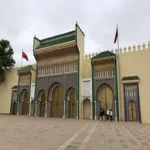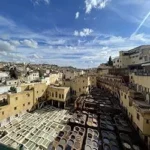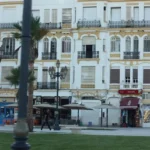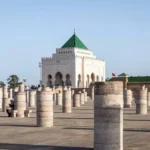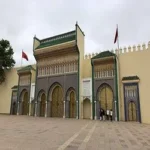Things To See In Tangier
Tangier sightseen – Things to see in Tangier?:
Things To See in Tangier. Tangier history, According to Greek mythology Tangier, or Tingi, was founded by the giant Antaeus. Tingi is mentioned by Carthaginian travelers as early as 500 BC, and Phoenician sailors visited even earlier. After the destruction of Carthage, Tingi was affiliated with the Berber kingdom of Mauretania. It then became an autonomous state under Roman protection, eventually becoming a Roman colony in the 3rd century AD during the reign of Diocletian, and ending as the capital of Mauretania Tingitana.
In the fifth century, Vandals conquered and occupied Tingi and from here swept across North Africa. A century later, Tingi became part of the Byzantine Empire and gradually fell into obscurity until the city’s capture by Moussa bin Nasser during the first years of the eighth century. The city’s inhabitants were converted to Islam, but many Berber tribes joined the schismatic Kharijite rebellion and seized the port city in AD 739. When Moulay Idriss I established his kingdom at Volubilis in AD 788, Tangier became a focal point in the struggle between the Idrisid dynasty and the Umayyads. This struggle continued until the Fatimid dynasty from Tunisia assumed power in AD 958.
Tangier came under the successive sway of the Almoravides and Almohades, after which the city fell under the influence of the Tunisian Hafsid dynasty before passing into the hands of the Merenids. By the 14th century, Tangier became a major Mediterranean port frequented by European trading vessels bringing cloth, spices, metals, and hunting birds in exchange for leather, wool, carpets, cereals, and sugar. After an unsuccessful attempt to seize Tangier in 1437, the Portuguese finally conquered and occupied the city in 1471, converting the great mosque into a cathedral. For nearly three centuries, the town was passed back and forth between the Spanish, Portuguese, and finally the English, when it was given to Charles II as part of the dowry from Catherine of Braganza.
The English granted Tangier a charter, which made the city equal to English towns. In 1679, Moulay Ismail made an unsuccessful attempt to seize the town but maintained a crippling blockade, which ultimately led to a British retreat. Under Moulay Ismail, the city was reconstructed to some extent but gradually declined until, by 1810, the population was no more than 5,000. Tangier began to revive from the mid-19th century, when European colonial governments fought for influence over Morocco.
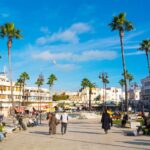
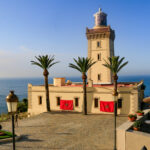
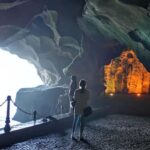
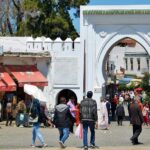
Things To See In Tangier
One of the worth things to see in Tangier is Tangier’s Kasbah (a high-walled defensive fortress where the sultan once lived) takes up the northern section of the medina. The main gate into the Kasbah (accessed from the northwest medina wall) opens onto a large courtyard, which leads to Dar el-Makhzen Palace, once the sultan’s residence and today used as the Kasbah Museum.
The palace was built in the 17th century and enlarged by each reigning sultan. The carved wooden ceilings and marble courtyard showcase the intricacies of Moroccan craftwork.
Cap Spartel, about 11 kilometers west of Tangier, marks Africa’s northwest tip. The promontory projects into the water, marking the boundary of the Mediterranean Sea with the Atlantic Ocean.
For atmosphere, the best time to come here is at sunset, when you can see dusk settle over the Atlantic.
The lighthouse here, at the tip of the promontory, is especially photogenic, and there’s a great café next door where you can grab a coffee or a juice and take in the sea views.
Just below the promontory is the five-kilometer-long stretch of Achakkar Beach. At the beach’s southern end are the Hercules Caves (Grottes d’Hercule) where, according to local myth, Hercules once lived.
Tangier’s medina (old city) tumbles down the cliff towards the ocean in a labyrinth of narrow alleyways. During its fast-paced past, the medina was a playground for author Paul Bowles and America’s legendary beatnik literary figures such as Jack Kerouac, Allen Ginsberg, and William Burroughs.
The central vortex of medina life is the square known as the Petit Socco, where old men sit for hours drinking tea and playing backgammon. Just west of the Petit Socco on Rue Siaghine is the Church of the Immaculate Conception, built by the Spanish in 1880. East of the square is the Grand Mosque
In the southeast corner of the medina is the American Legation Museum, once the US consulate building and the oldest American diplomatic post in the world. Morocco was the first country to recognize the newly independent USA and established its legation here in Tangier in 1821. The museum inside traces the history of the relationship between the US and Morocco, and the exhibits inside include George Washington’s famous letter to Moulay Abdullah. The Tomb of Tangier-born Ibn Battuta (Morocco’s famed 14th-century traveler and writer) is found in the medina’s northwest corner.
ALONG THE MOST NORTHWESTERN TIP of the African continent is an intriguing cave complex steeped in myths and legends. According to the lore, it was even visited by one of Roman mythology’s most famous heroes.
According to the myth, Hercules (adapted from the Greek Heracles) slept here on his way to steal three golden apples from the Garden of the Hesperides. Stealing the apples, which were believed to confer immortality, was the 11th of the “12 Labors of Hercules.” According to the ancient writers, the garden was located in nearby Lixus (the current city of Larache at the Atlantic coast). Another story goes that the cave is the one end of a 15-mile-long (24 kilometers) tunnel between Morocco and Spain. A popular folktale is that the famous macaque monkeys at the rock of Gibraltar came from Africa this way.
You won’t find Hercules or monkeys within the caves, but they’re worth exploring nonetheless. The complex has two openings. The one that faces the sea resembles the shape of Africa, and is said to have been created by the Phoenicians. The opening that faces land was created by the local Berbers, who cut their stones from the rock.
The caves are close to the Cap Spartel lighthouse that was built between 1861 and 1864 by an international coalition (including the United States, France, Spain, and Morocco) and marks the entrance of the Strait of Gibraltar.

